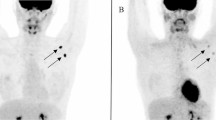Abstract
From April 28th to May 22nd, 1987, the Medical Authority identified 13 cases (6 symptomatic cases) of hepatitis A (HA) in a school and in a college of Rome.
The principal risk factor was determined to be “full-time presence at the State school and boarders at the college”. The distribution of HA cases suggested a person to person contact; antihepatitis A virus IgM were identified in 12 out of 13 cases with high levels of transaminases.
During the disease epidemic, water samples were taken from the well of the college for bacteriological and virological analyses. The water was classified as undrinkable due to the presence of 16 total coliforms/100 ml and 35 total bacteria count at 36° C.
Fecal coliforms, fecal streptococci and sulfite reducing clostridia were absent. Two water samples of 100 liters were collected and concentrated by adsorption-elution method on electropositive membranes or by ultrafiltration using a Millipore apparatus.
Infectious Hepatitis A virus was only isolated from samples concentrated by adsorption-elution method on electropositive membranes using tissue culture methods and subsequently HA virus was identified by other traditional methods (Elisa and immunofluorescence). In contrast, PCR test performed on the concentrated samples, was positive only for the ultraconcentrated sample. The positivity of the PCR test confirmed the presence of the Hepatitis A virus in the well water.
Similar content being viewed by others
References
AlexanderL.M. and MorrisR. (1991): PCR and environmental monitoring. The way forward? - Wat. Sci. Tech. 24 (2): 291–294.
APHA (1985): Standard methods for the examination of water and wastewater, 16th edition - American Public Health Association, Washington D.C.
BergeisenG.H., HindsM.W. and SkaggsJ.W. (1985): A waterborne outbreak of hepatitis A in Meade County, Kentucky - Amer. J. Pub. Hlth 75:161–164.
BlochA.L., StrameS.L., SmithJ.D., MargolisH.S., FieldsH.A., McKinleyT.W., GerbaC.P., MaynardJ.E. and SikesR.K. (1990): Recovery of hepatitis A virus from a water supply responsible for a common source outbreak of hepatitis A - Am. J. Pub. Hlth 80 (4): 428–430.
D'ArgenioP., EspositoD., MeleA., OrtolaniG., AdamoB., RapicettaM., ForteP., PisaniA., SoldoL., SarrecchiaB., StroffoliniT. and PasquiniP. (1989): Decline in the exposure to hepatitis A and B infections in children in Naples, Italy - Pub. Hlth 103: 385–389.
DienstagJ.L., RoutenbergJ.A., PurcellR.H., HooperR.R. and HarrisonW.O. (1975): Foodhandler — associated outbreak of hepatitis type A - An. Inter. Med. 83: 647–650.
DiviziaM., DeFilippisP., DiNapoliA., VenutiA., Perez-BercoffR. and PanàA. (1989a): Isolation of wild-type hepatitis A virus from the environment -Wat. Res. 23 (9): 1155–1160.
DiviziaM., SantiA.L. and PanàA. (1989): Ultrafiltration: an efficient second step for hepatitis A virus and poliovirus concentration - J. Virol. Meth. 23: 55–62.
HejkalT.W., KeswichB., LaBelleR.L., GerbaC.P., SanchezY., DreesmanG., HajkinB. and MelnickJ.L. (1982): Viruses in a community water supply associated with an outbreak of gastroenteritis and infectious hepatitis - J. Am. Wtr. Wks. Ass. 74: 318–321.
JpsenJ., DonovanW.R. and JamesD. (1952): Sociological factors in the spread of epidemic hepatitis in a rural school district - J. Hygiene 50: 457–462.
JansenR.W., SiegelG. and LemonS.M. (1990): Molecular epidemiology of human hepatitis A virus defined by an antigen-capture polymerase chain reaction method - Proc. Natl. Acad. Sci. 87: 2867–2871.
KwokS. and HiguckiR. (1989): Avoiding false positives with PCR - Nature 339: 237–238.
LewisG.D. and MetcalfT.G. (1988): Polyethylene glycol precipitation for recovery of pathogenic viruses, including hepatitis A virus and human rotavirus from oyster, water and sediment samples -Appl. Environ, Microb. 54 (8): 1983–1988.
LippyE.C. and WaltripS.C. (1984): Waterborne disease outbreaks 1964–1980: a thirty-five year perspective - J. Am. Wtr. Wks. Ass. 76: 60–67.
MeleA., RosminiF., ZampieriA. and GillO.N. (1986): Integrated epidemiological system for acute viral hepatitis in Italy (SEIEVA): description and preliminary results - Eur. J. Epidem. 2 (4): 300–304.
PandA., PattiA.M., ZarattiL., GrellaA. and ParoliE. (1984): Chlorine action on hepatitis A virus infectivity - L'Igiene Moderna 81: 454–458.
PapaevangelouG., MosleyJ.W., KyriakidouA. and EdwardsV.W. (1978): Viral hepatitis: lackof transmission in an Athenian school - Int. J. Epidemiol. 7 (4): 341–345.
RichardsG.P. (1985): Outbreaks of shellfish-associated enteric virus illness in the United States: requisite for development of viral guidelines - J. Food Prot. 48: 815–823.
SobseyM.D., OglesbeeS.E. and WaitD.A. (1985): Evaluation of methods for concentrating hepatitis A virus from drinking water -Appl. Environ. Microbiol. 50 (6): 1457–1461.
SobseyM.D., ShieldsP.A., HauchanF.H., HazarddR.L. and CatonL.W. (1987): Survival and transport of hepatitis A virus in soil, groundwater and wastewater -Wat. Sci. Tech. 18 (10): 97–106.
Sobsey M.D., Fuji T. and Shields P.A. (1988): Inactivation of hepatitis A virus and model viruses in water by free chlorine and monochloramine. Proceedings International Conference on Water and Wastewater Microbiology, Newport Beach, California, USA.
SouthernE.M. (1975): Detection of specific sequences among DNA fragments separated by gel electrophoresis - J. Mol. Biol. 98: 503–510.
StroffoliniT., DeCrescenzoL., GiammancoA., IntonazzoV., LaRosaG., CascioA., SarzanaA., ChiariniA. and DardanoniL. (1990a): Changing patterns of hepatitis A virus infection in children in Palermo, Italy - Eur. J. Epidem. 6 (1): 84–87.
StroffoliniT., BiaginiW., LorenzoniL., PalazzettiG.P., DiviziaM. and FrongilloP. (1990b): An outbreak of hepatitis A in young adults in central Italy - Eur. J. Epidem. 6 (2): 156–159.
TassopoulosN.C., Roumeliotou-KarayannisA., SakkaM., TicehurstJ., MihalikK., StaphanouT., PurcellR.H. and PapaevangelouG. (1979): An epidemic of hepatitis A in an institution for young children - Am. J. Epidemiol. 125 (2): 302–307.
VenutiA., DiRussoC., DelGrossoN., PattiA.M., RuggeriF., DeStasioP.R., MartinielloM.G., PagnottiP., DegenerA.M., MidullaM., PanàA. and Perez-BercoffR. (1984): Isolation and molecular cloning of a fast growing strains of human hepatitis A virus from double strand replicated form - J. Virol. 57: 579–598.
Wilson L.K. and Sobsey M.D. (1987): Inactivation of hepatitis A virus by chlorine in water. Proceedings Annual Conference, Kansas City, MO, June pp. 14–18.
ZarattiL., PattiA.M., PileggiD., FrancoE., DiviziaM., MisirocchiE. and PanàA. (1986): Comparison of indirect immunofluorescence and radioimmunoassay for detecting antibodies against hepatitis A virus of the IgG and IgM classes - Bol. Ist. Sieroter. Milan. 65 (6): 477–480.
Author information
Authors and Affiliations
Rights and permissions
About this article
Cite this article
Divizia, M., Gnesivo, C., Bonapasta, R.A. et al. Hepatitis a virus identification in an outbreak by enzymatic amplification. Eur J Epidemiol 9, 203–208 (1993). https://doi.org/10.1007/BF00158793
Issue Date:
DOI: https://doi.org/10.1007/BF00158793




